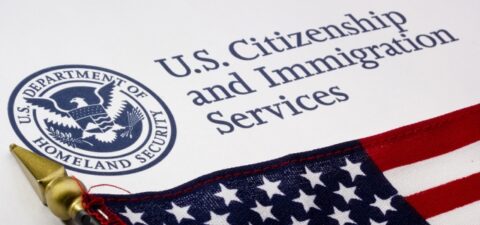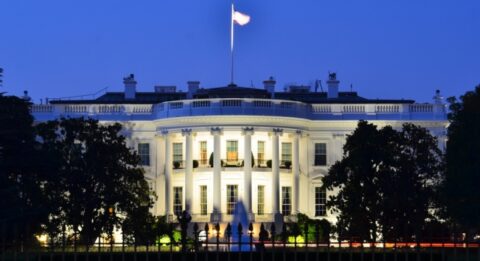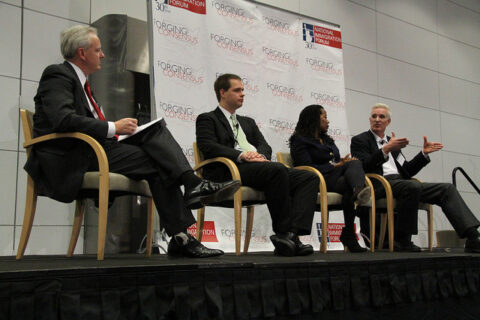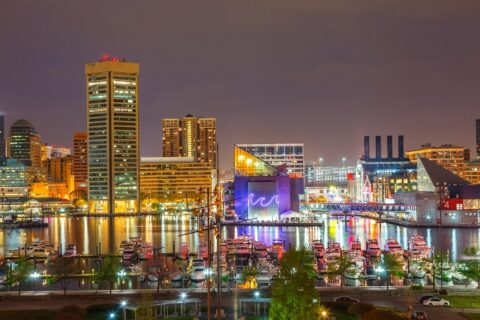Business & the Workforce

H-1B Visa Cap Reached in Five Days
U.S. Citizenship and Immigration Services (USCIS) announced on Friday, April 5, just five days after the H-1B high-skill “visa race” began, that they had received more applications than could be approved under the cap of 65,000 for fiscal year 2014. Additionally, USCIS stated they had received more than 20,000 H-1B petitions on behalf of individuals who are exempt from the cap. As such, USCIS will no longer be accepting additional H-1B petitions for fiscal year 2014. At this point, USCIS will use a random selection “lottery” process to allocate the 65,000 visas from the applications received through April 5. Read More

Small Business Owners Support Comprehensive Immigration Reform
Small business owners throughout the United States have a pulse on the goings on within their local communities. They recognize that immigrant workers and their families are also consumers, which helps to create additional jobs and bolster local economies. Within that context, two new polls highlight small business owners’ perspectives of immigration and its positive effects on the ground in communities. Overwhelmingly, the surveys show small business owners, regardless of political affiliation, support comprehensive immigration reform. Read More

Labor and Business Strike Immigration Deal on Worker Program
Over the weekend, the U.S. Chamber of Commerce and the AFL-CIO reached an agreement on a new type of immigrant worker program that has the potential to reshape the way temporary and permanent immigration visas contribute to American immigration policy. Although this is commonly referred to as future immigration flow, it should not be confused with other debates over increasing visas for high skilled workers or increasing employment based green cards. Instead, the agreement represents an attempt to reshape how business and labor will deal with the incredibly complex issues that are part of filling the demand for less-skilled labor in the United States. In the short term, it sets up a series of concepts that both sides would be willing to support in comprehensive immigration reform—but the Gang of Eight still has to convert those concepts into workable legislation. Read More

Why Regional Economies Need Immigration Reform
Comprehensive immigration reform and its array of issues is a hot topic of discussion these days at the national level. Yet while those in Washington continue crafting proposals, states are most impacted by the country’s current outdated immigration system and are making the economic and moral case for reform, as a recent Chicago Council on Global Affairs report highlights. Read More

Business and Labor Announce Breakthrough on Immigration Reform
One of the most contentious issues that has stymied past immigration reform proposals is the divide between business and labor over how many and under what conditions the U.S. should admit new immigrants into our labor force. Also known as the “future flow” issue, the conflict lies in the tension between business’ desire to recruit foreign workers and labor’s desire to ensure workforce protections for those working in the U.S. Read More

Putting the White House Immigration Reform Proposal into Perspective
Over the weekend, the press reported on a leaked draft of portions of the White House’s immigration proposal, and the coverage since then has been largely a frenzied discussion of whether the leak will kill Senate negotiations. There shouldn’t be much chance of that, given the immense pressure on the Senate to not only come up with a proposal, but actually draft legislation that can be debated and voted on this year. Now that at least some of the Administration’s ideas are out in the public eye, it’s useful to treat them as what they are: basic discussion points on what might be in an eventual bill. In the long run, the draft proposal may help to encourage the constructive conversation that the Administration has sought to have on reform. Read More

Can A Nation Have Too Many Smart People?
A February 8 op-ed in the New York Times entitled “America’s Genius Glut” argues that America already has too many high-tech workers, and thus does not need more scientists and engineers from abroad. It is a surprising claim that is at odds not only with the empirical evidence, but is out of touch with the dramatic shift in recent years towards a knowledge-based global economy. The United States is not actually suffering from a surplus of intelligent people, nor is it being economically drained by the presence of intelligent people who were born in other countries. In fact, the U.S. high-tech economy would not exist in its present form if not for the contributions of innovators and entrepreneurs from every corner of the globe. Despite arguments to the contrary, scientists and engineers who come to this country on H-1B visas are an integral part of that high-tech economy. Read More

Business and Religious Leaders Come Together to Champion Immigration Reform
Immigration reform is an undertaking of such importance that it should transcend partisanship. That was the fundamental message of the business and religious leaders who gathered together yesterday at a press conference organized by the National Immigration Forum. The press conference was part of a campaign called Forging a New Consensus on Immigrants and America, which describes itself as “a growing and diverse constituency of conservative, moderate and progressive leaders that is determined to go beyond the rhetoric and find common ground for practical solutions.” The event comes on the heels of an announcement late last week by Thomas Donohue, President of the U.S. Chamber of Commerce, that a broad coalition of business, labor, religious, law enforcement, and ethnic organizations has coalesced around the cause of immigration reform. Read More

The U.S. Economy Still Needs High-Skilled Immigrant Workers
With the U.S. economy in the midst of a prolonged slump, it’s hard to believe that a labor shortage exists anywhere in the country. But that is precisely the case when it comes to the high-tech industries which depend upon highly skilled scientists and engineers. The United States has long faced a dilemma in this respect: the U.S. educational system is not producing high-tech professionals in numbers that are sufficient to meet labor demand. That is one reason so many U.S. scientists and engineers are immigrants. And it is one of the reasons that even more U.S. scientists and engineers would be immigrants if not for the arbitrary limits imposed by the U.S. immigration system. For the sake of the U.S. economy’s recovery and long-term competitiveness, lawmakers should revise the antiquated rules that currently govern how many and which high-tech professionals from abroad are allowed to work in the United States. Read More

Immigrants May Hold the Key to Urban Renewal in Baltimore
In an attempt to reverse decades of population decline, Baltimore Mayor Stephanie Rawlings-Blake has launched a high-profile effort to attract “new Americans” to the city. The theory is that these new Americans—that is, immigrants—will bring the skills, entrepreneurship, and tax base needed to revitalize blighted neighborhoods that are now full of boarded-up buildings rather than thriving businesses and family homes. The available evidence suggests that immigration can indeed be a powerful force for urban renewal. But most immigrants will not be drawn to a new city simply by a welcome sign. It is likely that they look for some signs of revitalization before they take the risk of uprooting their families and moving to a new place. Read More
Make a contribution
Make a direct impact on the lives of immigrants.
